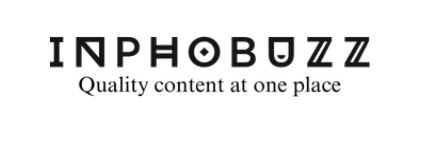Part 1: Experience plan
|
|
|
Date
implemented |
|
|
Children
– Pre-school Children |
|
|
1.
Title
& brief description For young children in preschool, gender studies provides an interesting and well-known topic. Aim - To introduce and clarify the idea of gender to children while also instructing them on how to accept gender-specific words in English Objective: To educate children about the spectrum of gender expression and the language that can be used to promote a more accepting society. |
|
|
2.
Source · Children’s Interests · Teacher initiated · Family input · Developmental task · Program follow-up · Community & culture · Care giving & routines · Spontaneous event · Things in the environment |
Reason or explanation (rationale based on Oral Language Research) In order to learn a language with better norms and values, children at this level need to be able to understand a variety of themes (Ghosh, 2019, p. 4). Considering that the topic was selected with the goal of teaching preschoolers the value of having a positive view of society in addition to language skills. For preschool-aged children to develop their minds to the positivity of refraining from using foul language, gender studies will be important themes. Alternately, to promote societal equality, use appropriate and respectful terminology for various genders. PRINCIPLE • Diversity Respect • PRACTICES • Learning Through Play • Intentional Teaching OUTCOMES ·
Learning Objective 1.3: Children develop informed and assured self-identities 4.1: Kids pick up learning traits like curiosity, cooperation, self-assurance, creativity, dedication, zeal, perseverance, imagination, and reflexivity. ·
Learning Outcome 5.1: For a variety of reasons, children communicate verbally and nonverbally with others. ·
Learning Outcome 5.3: Children communicate their ideas and make sense in a variety of ways.
|
|
3. Learning priorities that support oral language development Children will be able to identify gender norms, and regardless of gender preference, anyone can wear toys and clothing. Ø Children will get along with everyone, regardless of how they feel about gender. Ø Children
will practice the different positive terminologies for genders Ø No matter how they feel about gender, children will get along with everyone. Children will understand that there are no "boyish" or "girlish" objects and that there are no such things as "boyish" or "girlish" items.
|
|
|
4. Materials & set up (Where, when, what, supervision, guidance & limits, health & safety - Provide a photo or diagram of the set up) Ø Leslea
Newman's book "Sparkle Boy" Ø Printed
sheet featuring images of various toys, outfits, and accessories. Ø Paper
doll cut-outs of gowns, hair, shoes, glue, and glitter for both girls and
boys in a class |
|
|
5. Procedure & strategies (including specific ways the activity supports oral language development and how you will use the resources to explore Blank’s Level of Talk) Book
Reading - The exercise begins with the children being read the book
"Sparkle Boy" by Leslea Newman. The main character of the book is a boy who expresses himself by dressing in non-conforming clothing. Young readers are taught by books that individual variation is beneficial and that it's okay if someone approaches something a little differently than everyone else. The story's main character is an illustration of someone who might belong to the LGBTQ+ community. Following that, the
narrative will be examined, and any questions raised by the children will be
addressed. Gift Selection Activity - The distribution of images of various toys, outfits, and accessories kicks off this activity. Draw a circle around the gifts for a boy and a girl for the children to trace. Paper Doll Activity - Start by giving kids supplies like paper, glitter, glue, and costume cutouts. The children will then be given usage instructions, but it will be up to them to make and choose whatever they want. They will now be asked to make a paper doll self-portrait that expresses their emotions. Methods of
Instruction • Questioning - Ask
questions from the text such as: 1. How
does Casey's family feel about his interest in dressing up? 2. What
kinds of things like toys, hobbies, and clothes does Casey like? 2. Instructing
- Teaching youngsters how to select gifts and make paper dolls. 3. Demonstrating
- Showing youngsters how to make paper dolls with the supplies given. 4. Now,
directing - directing youngsters during the paper doll crafting activity |
|
|
6. Theoretical and
EYLF links
Through Dramatic Play: using dramatic expression to come up with ways to get rid of old-fashioned gender stereotypes in their daily lives. Internalize the idea that it is never okay to insult or harass someone because they don't fit gender stereotypes or standards because doing so ultimately hurts us all. Maintain an environment where children feel safe expressing themselves and their unique identities are respected.
EYLF Links
O3
Despite gender discrimination, children learn to communicate with one another. They acquire language skills and grow as members of society.
|
|
|
References
|
|







0 Comments
If you have any suggestions, please comment